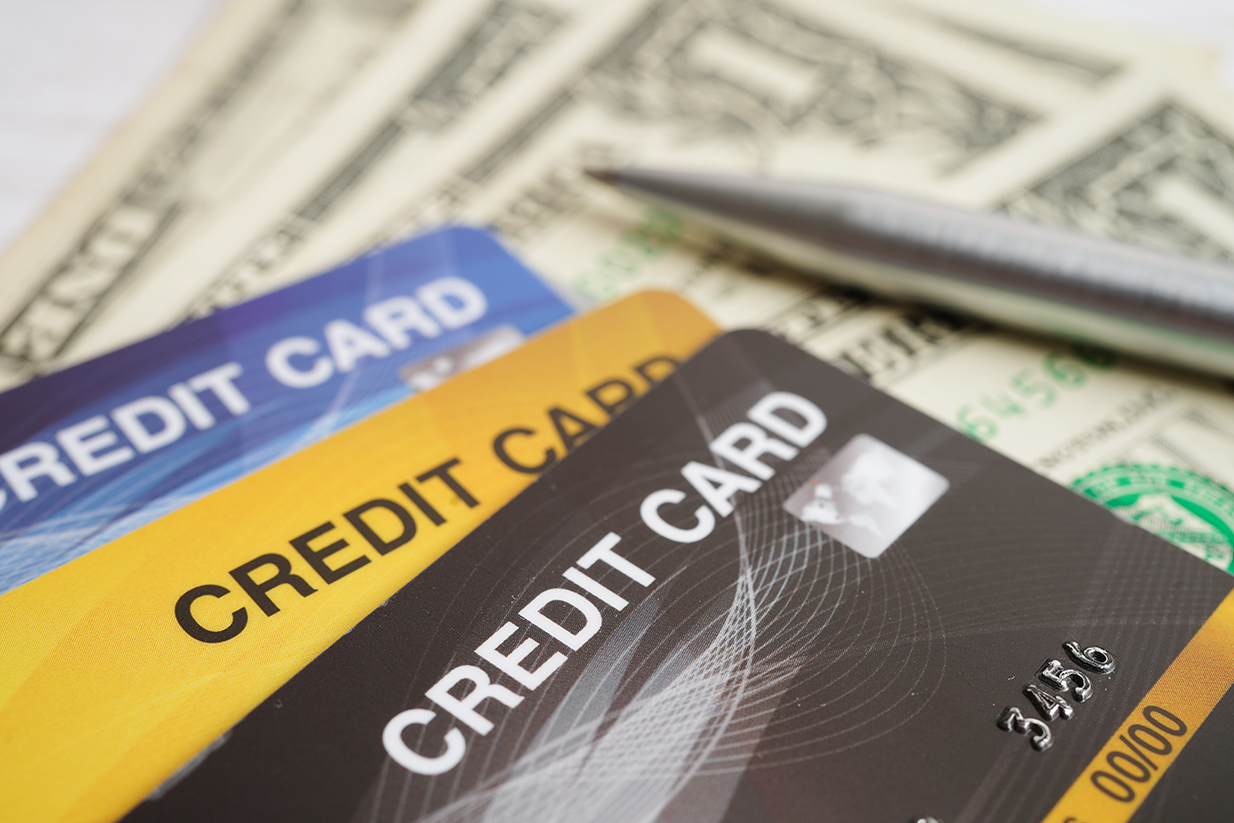
Why Credit Repair Is High Risk and How You Can Profit
Nov 8, 2023 3 minutes
Credit repair services are essential to this world we live in, run by credit and filled with consumers grappling with poor credit scores and crippling debt.
Even if credit repair is so crucial to the flow of commerce, the industry is snugly fit into the high-risk category by many financial institutions and payment processors. This labeling significantly impacts how credit repair companies manage their payment processing, especially when it comes to credit card payments and online transactions.
Having navigated these choppy waters alongside numerous credit repair business owners, I’ve garnered a treasure trove of insights. This post aims to demystify the high-risk tag associated with the credit repair sector, unravel the challenge of chargebacks, and explore why mainstream payment services like PayPal and Stripe often steer clear of the credit repair industry.
Why Credit Repair Tops the List of High-Risk Merchants
The credit repair industry bears the high-risk tag with a sense of inevitability. Various factors contribute to this label, influencing how credit repair companies interact with financial institutions, merchant services providers, and payment processors.
Unpredictable Business Model
- The outcomes of credit repair services can be unpredictable, as they largely depend on individual credit circumstances.
- The lack of a guaranteed result sometimes leads to customer dissatisfaction and, consequently, chargebacks.
High Chargeback Rates
- Credit repair companies often experience a higher rate of chargebacks compared to other industries.
- Chargebacks occur when customers dispute charges on their credit card statements, a scenario commonly seen in the credit repair business due to the often-misunderstood nature of the services provided.
Financial Institutions’ Apprehensive Stance
- The credit repair industry has, over the years, seen its fair share of fraudulent operations, which casts a long shadow of doubt, making financial institutions and payment processors wary.
- This apprehension results in stricter underwriting processes during the merchant account application process, making it challenging for many credit repair businesses to secure payment processing solutions.
Regulatory Scrutiny
- The industry operates under stringent regulatory scrutiny due to its direct impact on consumers’ financial health.
- Compliance with various federal and state laws is mandatory, further complicating the business model and payment processing landscape for credit repair companies.
Credit and Debit Card Payment Challenges
- The high-risk label significantly impacts a credit repair business’s ability to process credit and debit card payments seamlessly.
- Many mainstream payment processors shy away from extending their services to high-risk industries, thereby limiting the payment methods available to credit repair companies.
Understanding the above factors is crucial for business owners within the credit repair sector. It sets the stage for navigating the inherent challenges and seeking tailored solutions like credit repair merchant accounts that cater to the industry’s unique needs.
By delving into the specifics of why the credit repair industry is categorized as high-risk, business owners can better prepare and position themselves to overcome the hurdles that come their way.
High risk businesses need high risk processing. Let’s get connected.
The Chargeback Challenge
Chargebacks are a notorious challenge in the credit repair industry, often acting as stumbling blocks in the path of smooth payment processing. Here’s a closer look at what chargebacks entail and how they can be managed effectively in the credit repair realm.
Defining Chargebacks
- A chargeback occurs when a customer disputes a charge on their credit card, leading to the funds being returned to the customer.
- For credit repair companies, this often arises due to dissatisfaction with the services provided, misunderstandings, or in the worst cases, fraudulent claims.
High Chargeback Ratio? A Red Flag
- A high chargeback ratio is often seen as a red flag by payment processors and merchant account providers.
- It signifies a potentially risky business model, thereby making credit card processing and other payment processing solutions more challenging to obtain.
Managing Chargebacks
Effectively managing chargebacks is pivotal for maintaining a healthy credit repair merchant account and ensuring the longevity and reputation of your credit repair business. Here are some proactive steps:
- Prompt Resolution
- Engage with customers promptly to resolve disputes.
- Offer refunds when warranted, as this can often be more cost-effective than facing a chargeback.
- Clear Communication
- Ensure that customers have a clear understanding of the services provided, pricing, and the realistic outcomes they can expect.
- Provide detailed receipts and keep customers informed throughout the service provision process.
- Preventive Measures
- Employ tools that verify customer identity and authenticate transactions to reduce the occurrence of fraud.
- Keep meticulous records of communications, transactions, and service provision, which can be invaluable in disputing chargebacks.
- Educating Your Team
- Ensure that your team is well-versed in recognizing potential chargeback triggers and handling customer disputes professionally and effectively.
- Engaging Professional Assistance
- Consider consulting with high-risk payment processing experts or chargeback management services to tailor a strategy that minimizes chargeback occurrences.
Embracing the Right Processing Solutions
- Opting for high-risk merchant services tailored to the credit repair industry can provide robust chargeback prevention and management tools.
- These specialized processing solutions understand the nature of chargebacks within the credit repair realm and offer the necessary support to mitigate risks and handle disputes efficiently.
By comprehensively addressing the chargeback challenge, credit repair business owners can build a more resilient operation capable of weathering the common financial storms associated with the high-risk label.
The right approach towards chargeback management not only safeguards your business but also paves the way for a smoother, more reliable payment processing experience.
Why PayPal and Stripe Don’t Want Your Business
The digital payment sphere has witnessed the ascent of giants like PayPal and Stripe, known for their user-friendly interfaces and seamless transaction experiences.
However, when it comes to high-risk industries like credit repair, these mainstream payment service providers often take a step back. Let’s delve into why PayPal and Stripe might not be the go-to payment processors for your credit repair business.
Policy Restrictions
- Both PayPal and Stripe have explicit policies that often exclude high-risk businesses, including credit repair companies.
- Their stringent guidelines are designed to mitigate risks associated with chargebacks, fraud, and regulatory compliance, which are prevalent concerns in the credit repair sector.
High Chargeback Landscape
- The propensity for high chargeback rates in the credit repair industry is a deterrent for these payment processors.
- Handling chargebacks can be resource-intensive, and a high frequency of these instances can tarnish the processor’s relationship with their banking partners.
Risk Management Stance
- PayPal and Stripe maintain a risk-averse stance, which often translates to a reluctance in serving industries with a perceived higher level of risk.
- Their risk management protocols are geared towards maintaining a low-risk merchant portfolio to ensure operational smoothness and compliance with financial regulations.
Alternative Payment Processing Solutions
- The reluctance of PayPal and Stripe to cater to high-risk businesses necessitates exploring alternative payment processing solutions.
- High-risk merchant account providers and payment gateways that specialize in high-risk industries become invaluable allies for credit repair companies seeking reliable payment processing.
The Quest for Stability
- The volatility inherent in the credit repair business model demands a more tailored payment processing approach.
- High-risk payment processing solutions offer the stability and understanding of industry-specific challenges, which are often lacking in mainstream payment processors like PayPal and Stripe.
Navigating the payment processing maze can be daunting for credit repair business owners. The mainstream allure of PayPal and Stripe may seem enticing, but the reality of their risk-averse policies often leads to a dead end for high-risk industries.
Therefore, venturing into the realm of high-risk merchant services is a pragmatic step towards ensuring that your credit repair business has a sturdy and accommodating payment processing foundation. This shift not only aligns with the industry’s risk profile but also opens the door to a suite of services designed to navigate the high-risk waters with finesse and assurance.
3rd-party PSPs won’t support your business. We will.
A Credit Repair Merchant Account Will Anchor Your Business
Navigating the high-risk waters of the credit repair industry demands a robust, reliable payment processing solution. A credit repair merchant account can credit repair businesses towards calmer waters.
Let’s explore why opting for a credit repair merchant account is a prudent decision and how to embark on this route.
Tailored Underwriting Process
- High-risk merchant account providers offer a tailored underwriting process, understanding the unique business model of credit repair services.
- The underwriting process takes into account the inherent risks, ensuring a fair evaluation that increases the chances of account approval.
Ability to Handle Higher Chargeback Rates
- Specialized credit repair merchant accounts are designed to manage the higher chargeback rates typical in the credit repair industry.
- They offer comprehensive chargeback management tools and support to help mitigate and resolve chargeback disputes efficiently.
Application Process for a Credit Repair Merchant Account
Embarking on the route to securing a credit repair merchant account requires a structured approach:
- Documentation Preparation
- Have your business documentation in order, including bank statements, processing history, and business financials.
- Ensuring clarity and transparency in your documentation expedites the approval process.
- Selecting a Provider
- Look for high-risk merchant account providers with a track record in serving the credit repair industry.
- DirectPayNet, for instance, offers specialized services catering to the credit repair sector, ensuring a smoother application and operational process.
- Filling Out the Application
- Fill out the merchant account application meticulously, providing all necessary details.
- Seek guidance from your chosen provider to ensure all bases are covered, increasing the likelihood of a successful application.
Accepting a Variety of Payment Methods
- Credit repair merchant accounts provide the flexibility to accept a diverse range of payment methods including credit card payments, debit, ACH, and echeck.
- This flexibility enhances the customer experience, making it easier for clients to engage with your credit repair services.
Pricing and Fees
- Understand the pricing structure, including any higher fees associated with high-risk merchant accounts.
- Weigh the cost against the benefits of having a reliable, industry-specific payment processing solution.
Building a Long-Term Relationship
- Establishing a long-term relationship with a reliable high-risk merchant account provider like DirectPayNet can lead to better terms over time.
- As your processing history strengthens and chargeback ratios decrease, you may negotiate for better rates and terms.
Securing a credit repair merchant account is a strategic move towards anchoring your business in a stable payment processing framework. It’s about building a solid foundation that not only withstands the high-risk industry challenges but also propels your credit repair business towards sustainable growth.
With the right merchant account partner, the journey towards achieving a seamless payment processing environment becomes a rewarding venture, instilling confidence and trust in the financial backbone of your credit repair business.
Ready to set sail towards a more secure and reliable payment processing horizon?
Reach out to DirectPayNet today and discover how a specialized credit repair merchant account can be the compass guiding you through the high-risk seas, straight into the harbor of business success.
Your voyage towards better business operations begins with a simple, decisive step. Connect with DirectPayNet, and let’s chart the course towards a brighter, more secure financial future for your credit repair business.




